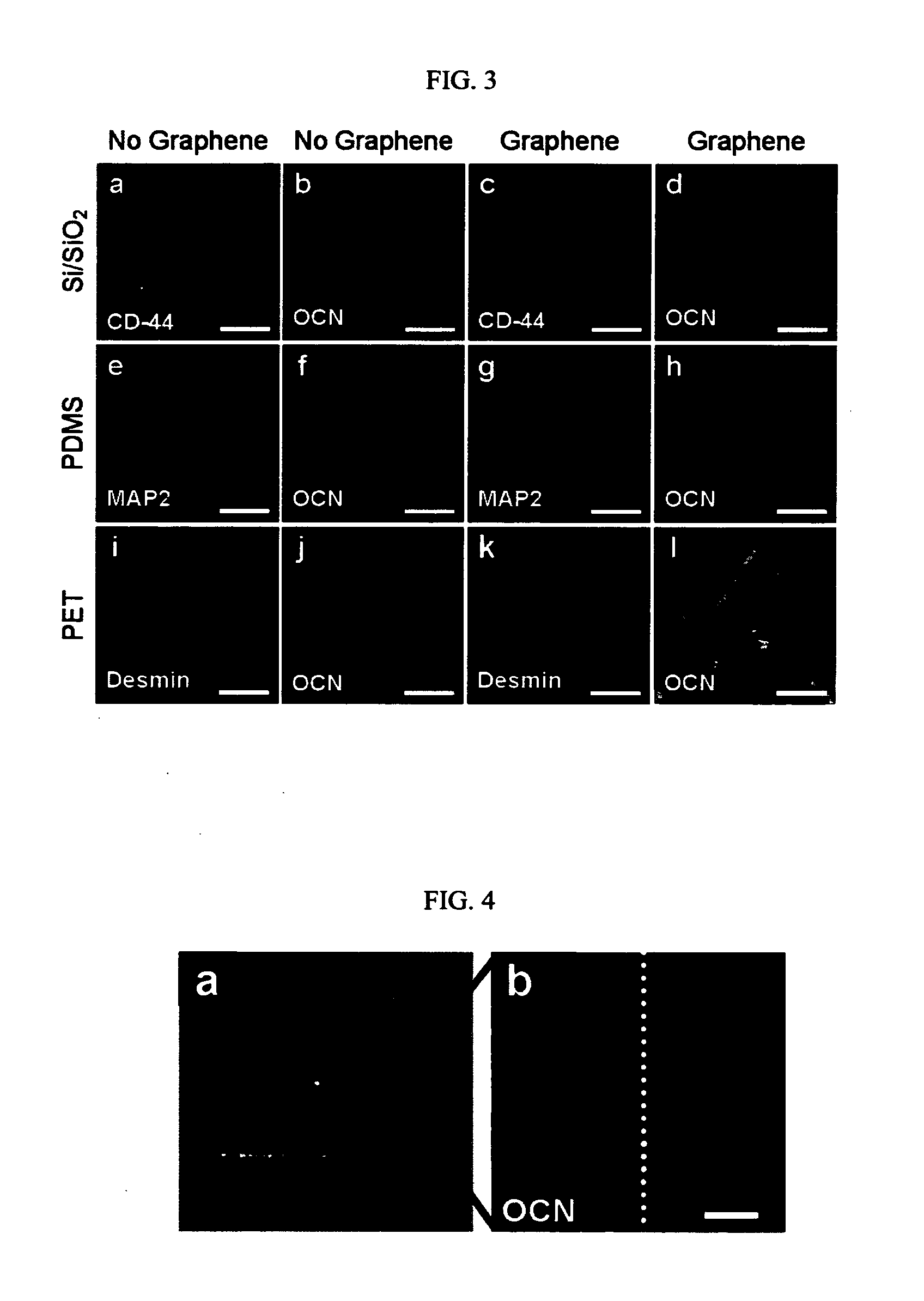Method For Controlling And Accelerating Differentiation Of Stem Cells Using Graphene Substrates
a graphene substrate and stem cell technology, applied in the direction of biocide, skeletal/connective tissue cells, prosthesis, etc., can solve the problems of high cost, low availability, and many challenges, and achieve the effect of accelerating the specific differentiation of stem cells, reducing the number of stem cells, and not affecting the proliferation of human stem cells
- Summary
- Abstract
- Description
- Claims
- Application Information
AI Technical Summary
Benefits of technology
Problems solved by technology
Method used
Image
Examples
Embodiment Construction
[0017]The invention pertains to methods of directing differentiation of stem cells when cultured on graphene, in the presence of osteogenic medium that does not require further supplementation of additional growth factors or replenishment of growth factors. The methods and compositions of the invention may be used for repairing or improving tissue function. The invention is based, in part, upon data reported herein showing that graphene provides a biocompatible scaffold that does not hamper the proliferation of stem cells in stem cell medium and directs the stem cells to specifically differentiate into bone cell types once cultured in osteogenic medium.
[0018]Results showed that mono-atomic graphene coated substrates accelerated cell differentiation to a higher extent than un-coated substrates or cover slips. In contrast to other materials, graphene does not require additional chemical inducers (e.g., growth factors including BMP-2) to be continuously added or replenished to the oste...
PUM
 Login to View More
Login to View More Abstract
Description
Claims
Application Information
 Login to View More
Login to View More - R&D
- Intellectual Property
- Life Sciences
- Materials
- Tech Scout
- Unparalleled Data Quality
- Higher Quality Content
- 60% Fewer Hallucinations
Browse by: Latest US Patents, China's latest patents, Technical Efficacy Thesaurus, Application Domain, Technology Topic, Popular Technical Reports.
© 2025 PatSnap. All rights reserved.Legal|Privacy policy|Modern Slavery Act Transparency Statement|Sitemap|About US| Contact US: help@patsnap.com



